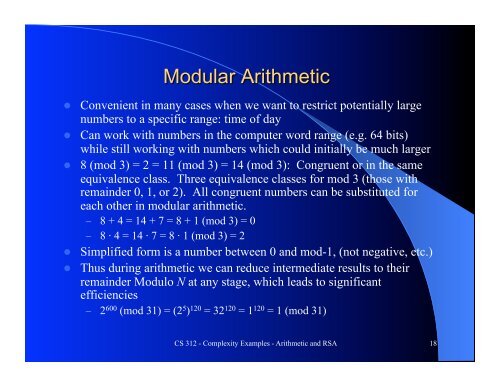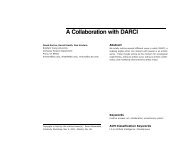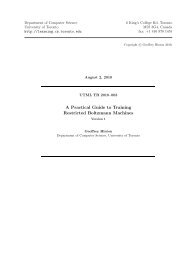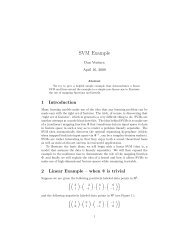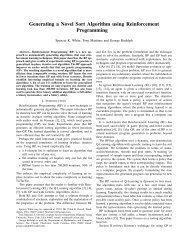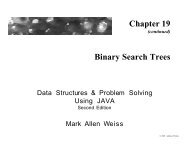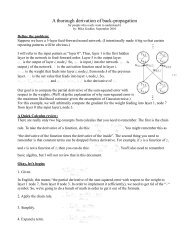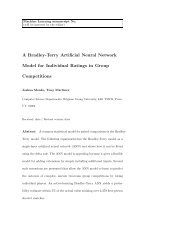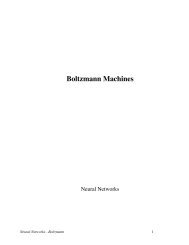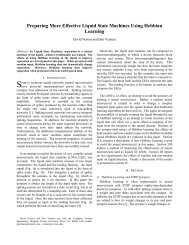Modular Arithmetic and Primality
Modular Arithmetic and Primality
Modular Arithmetic and Primality
You also want an ePaper? Increase the reach of your titles
YUMPU automatically turns print PDFs into web optimized ePapers that Google loves.
Convenient in many cases when we want to restrict potentially large<br />
numbers to a specific range: time of day<br />
Can work with numbers in the computer word range (e.g. 64 bits)<br />
while still working with numbers which could initially be much larger<br />
8 (mod 3) = 2 = 11 (mod 3) = 14 (mod 3): Congruent or in the same<br />
equivalence class. Three equivalence classes for mod 3 (those with<br />
remainder 0, 1, or 2). All congruent numbers can be substituted for<br />
each other in modular arithmetic.<br />
– 8 + 4 = 14 + 7 = 8 + 1 (mod 3) = 0<br />
– 8 · 4 = 14 · 7 = 8 · 1 (mod 3) = 2<br />
Simplified form is a number between 0 <strong>and</strong> mod-1, (not negative, etc.)<br />
Thus during arithmetic we can reduce intermediate results to their<br />
remainder Modulo N at any stage, which leads to significant<br />
efficiencies<br />
– 2 600 (mod 31) = (2 5 ) 120 = 32 120 = 1 120 = 1 (mod 31)<br />
CS 312 - Complexity Examples - <strong>Arithmetic</strong> <strong>and</strong> RSA 18


